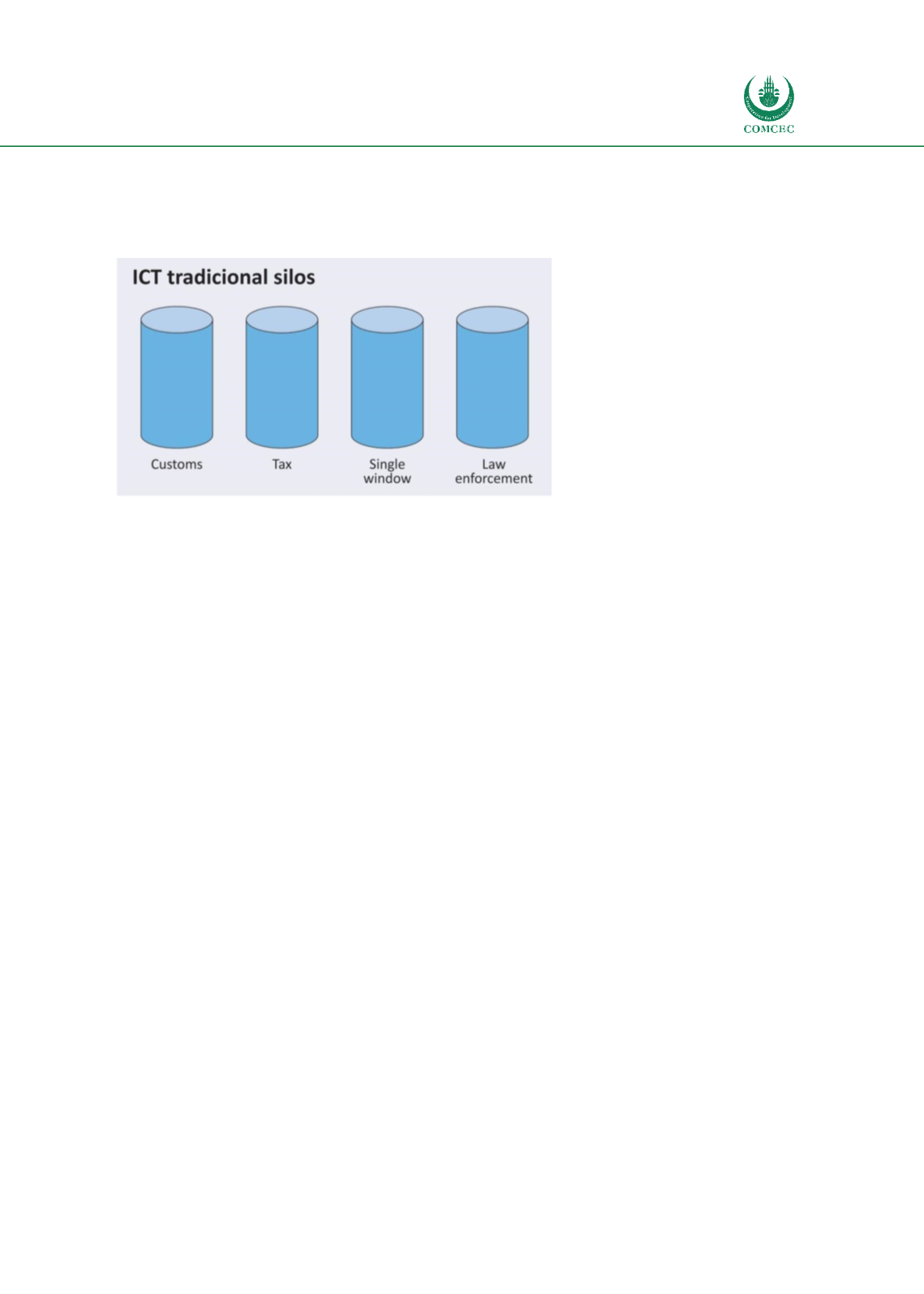

Facilitating Trade:
Improving Customs Risk Management Systems
In the OIC Member States
161
manage, resulting in a desire just to spend less. That’s why the recommendations are to "melt
the silos" and switch to data integration. The CRM Security and compliance requirements often
sacrifice output and innovation for the determination of risk avoidance.
Figure 57: Example of Silo Oriented Data Architecture
Author’s compilation
Data integration as a service refers to data integration functionality (such as extraction,
transformation, and loading (ETL), data federation and replication) delivered by a model where
an external provider or any of the stakeholders owns the infrastructure and hosts the
capabilities used by the CRM. These hosted capabilities can be used as alternatives to in-house
deployments of data integration software or the development of custom-coded solutions. Data
integration as a CRM supportive service can potentially be applied to most OIC MS Customs.
Early benefits will come as resource-constrained organizations apply these solutions to specific
issues, such as the synchronization of data between customs, tax, single window and law
enforcement. Currently, many customs administrations are using cloud-based (private/public)
offerings to achieve flexible and low-cost non-production IT system (development and quality
assurance) environments. As cloud-based infrastructures mature, data integration as a service
will become a major supportive component to the CRM infrastructure.
The path to integrate the Data for CRM
- the first process is “melting the silos” and defines the
conceptual framework for interconnectivity and interoperability within the isolated data layers.
The scope of the framework covers organization, knowledge, processes, information and
technology and their relationships to one another. It is suited for implementation within a
national domain environment and allows connectivity with and from external sources
(Figure 58).
Interconnectivity
represents the backbone of any interoperability, defined as middleware
standards and technologies for connecting data layers. During the past 5 to 10 years,
interconnectivity technologies have been gradually integrated with middleware layer (web
services and Enterprise Service Bus).
The term
interoperability
has different meanings in different contexts. In its broad sense, it
describes the ability of stakeholders to work together and the ability to share and use the
information. At a technical level, it is the ability of two or more diverse information systems or
components to meaningfully and seamlessly exchange information and use the information that
is exchanged. Interoperability in the context of the CRM integration framework can be
categorized as follows:
















